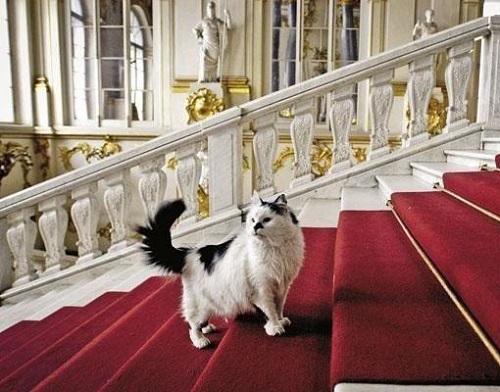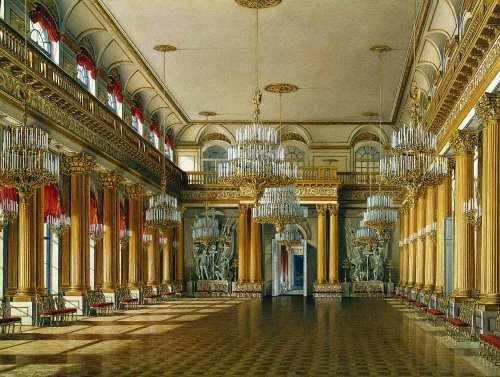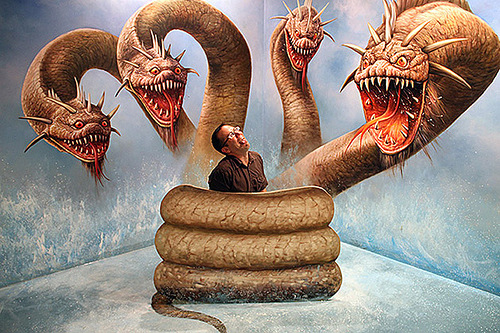Walking through the halls of the Hermitage. part 5
Walking through the halls of the Hermitage. part 5. Hermitage Museum in St. Petersburg is one of the most famous museums not only in St. Petersburg, but also throughout the world. Together with world renowned museums like the Louvre, the Metropolitan and the British Museum, it has a rich collection and is one of the most visited museums in the world. Currently, the museum has a collection of more than 3 million items. This is primarily paintings and sculpture, applied art, and other works of art. If we consider every item one minute, it would take eight years to see the whole collection. For inspection of all exposures you need to walk 20 miles.
The most famous building of the museum complex – the Winter Palace. Everyone who comes to the Palace Square admiring this building, designed by the architect B.F.m Rastrelli in 1754-1762. Besides, the single set includes the Small Hermitage (architect Jean-Baptiste Vallin de la Mothe), Grand Hermitage (architect Y. M. Felten), the Hermitage Theatre (architect Giacomo Quarenghi) and the New Hermitage (L. von Klenze).
From the lobby to the second floor is the Jordan Staircase, which almost did not change its original appearance. Only after the fire in 1834 gilded wooden statues in the niches were replaced by marble. A column of artificial marble replaced with granite.
The hall was built in 1833-1834 by Auguste Montferrand. When it was completed in 1834, on the walls of the hall Fieldmarshal in six of seven niches were placed portraits of Russian field marshals. In March 2012, decoration of the hall was completely restored. The portraits of Paskevich-Erivansky, Suvorov-Rymniksky, Golenishchev-Kutuzov-Smolensky, Potemkin-Tavrichesky, Rumyantsev-Transdanubian, Dibich-Zabalkansky were returned.
Peter’s (Small Throne) Room
The hall was built in 1833 by de Montferrand and rebuilt after a fire in 1837 by V. Stasov. Room is dedicated to the memory of Peter I. The interior includes a monogram of Emperor (two letters “P”), two-headed eagles and crowns. In the niche, decorated as triumphal arch, the painting “Peter I with Minerva”. In the upper part of the walls are placed canvases representing Peter the Great in the battles of the Northern War (P. Scott and B. Medici). The throne was made in St. Petersburg at the end of XVIII century. Room decorated with silver embroidered panels with velvet and silver items of St. Petersburg.
Armorial Hall of the Winter Palace, designed for receptions, was created by Vasily Stasov in late 1830. In the entrance hall there’s a sculptured group of ancient warriors with banners, on staffs that have been laid down shields with the arms of the Russian provinces. In addition, the arms of provinces located on the gilded bronze chandeliers. Slender colonnade supporting a balcony with a balustrade, frieze ornamented with acanthus leaves, and the combination of gold and white create an impression of grandeur and solemnity. In the center – a bowl of aventurine by stone cutters of Yekaterinburg of XIX century.
The War Gallery of 1812
Gallery dedicated to the victory of Russian arms over Napoleon. It was built by Karl Rossi and unveiled on the anniversary of the exile of Napoleon in Russia, 25 December 1826, in the presence of the Imperial Court, generals, officers and soldiers who were awarded for their participation in the war of 1812 and in foreign campaigns of the Russian army in 1813-14. Placed on its walls painted portraits by George Dawe 332 generals – members of the war in 1812 and foreign campaigns of 1813-1814.
In addition, the gallery has a portrait of Emperor Alexander I and King of Prussia, Frederick III of F. Kruger, a portrait of Emperor Franz I of Austria by P. Kraft. The prototype served as one of the gallery rooms of Windsor Palace in memory of the Battle of Waterloo, in which were focused portraits of the participants of Battle of Nations.
Pushkin, who admired this gallery, in his poem “The Warlord,” dedicated to it a few verses. They are engraved on a marble slab set here.
St George’s (The Throne) Room
Hall of the Winter Palace was established in early 1840’s. Vladimir Stasov, who retained the composition solution of Giacomo Quarenghi. Two tiers of windows columned hall decorated with Carrara marble and gilded bronze. Over the throne place the bas-relief “George, slaying the dragon.” Great imperial throne was made by order of Empress Anna Ivanovna in London (N. Clausen, 1731-1732). Gorgeous parquet floor, made of 16 kinds of wood. The ceremonial hall decoration was intended for the official ceremonies and receptions.
Walking through the halls of the Hermitage

Polyakov – Throne Speech of Nicholas II during the opening the first the State Duma of the Winter Palace
liveinternet.ru/users/matrioshka









































